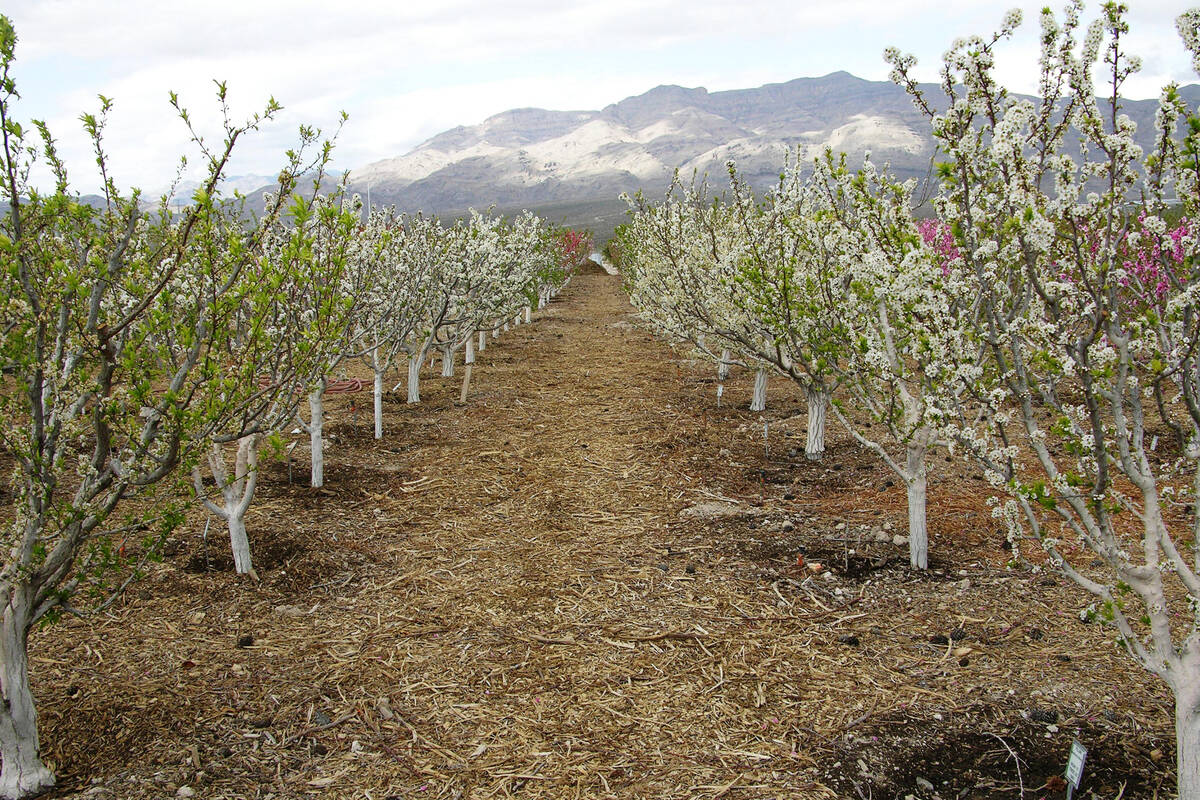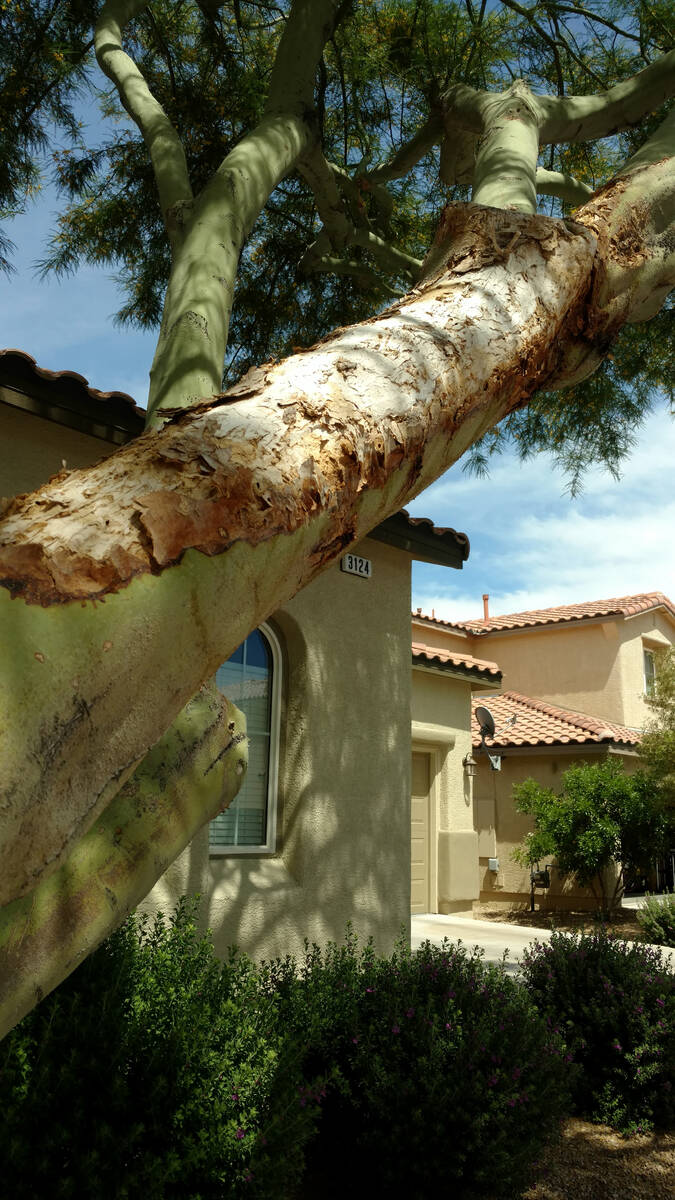Do honeybees prefer pink flowers over white ones?
Q: I have fruit trees in bloom. Some with white flowers and some with pink. All the bees are on the pink flowers and ignore the white flowers. Any ideas why?
A: The pink flowers are usually peaches or nectarines. Peaches are one of the most popular temperate fruit trees. That’s one reason fruit tree hybridizers have focused on peaches. They have the earliest and latest opening flowers as far as temperate fruit trees go, as well as the widest range of fruit flavors. Nectarines are not as popular (and they haven’t been around as long as peaches), so they come in a distant second but seem to be catching up.
All of the so-called temperate fruit trees flower in the spring. The white-flowered types such as almonds, plums and pluots, apples and pears usually flower a bit later.
I do not believe that honeybees will visit white flowers once they start visiting pink-flowered plants. They don’t like to mix and match. That is why you can get orange blossom and mesquite honeys — I am guessing that the bees have focused on one color of flower.
Q: I have a 2-year-old orange tree that has 15 oranges on it and a Meyer lemon tree I planted last spring with two lemons on it. The other day I noticed the lemons were gone with no trace. The following morning, I noticed one of the oranges was nibbled on. The following morning a different orange was missing, so I picked the oranges.
I have noticed that the leaves on the lemon tree are disappearing, and more and more leaves are gone every morning, so now the tree is almost bare. I live on a golf course, and I see lots of little black boxes all around with rat poison when I walk my dog. Do you think it is rats? If it is, what do I do? I never see any rabbits. This happens at night.
A: Your description fits both rats and rabbits. Look for droppings close to the food. Rats and rabbits are problems on golf courses. If the golf course borders the desert, then rabbits are a more likely problem. If it is closer to an urban center, then rats are more likely.
The primary rabbit culprits are jack rabbits and desert cottontails. Rabbits are herbivores, which means they prefer to eat plants. They like golf courses so much because of the grass and water. Grasses make up about 70 percent of their diet when they can get them. Otherwise, they will eat prickly pear cactus and mesquite leaves and stems, mostly for water.
However, rats could also be your problem. Rats are everywhere in urban areas. Roof rats have been documented in Las Vegas since 1990. Most likely they were here even earlier. Rats like to nest and hide during the day in the skirts of palms (dead fronds) and will jump from them when they sense fire or other threats.
Rats like standing water and dense vegetation when they can’t find a food source nearby. They are omnivorous, which means they prefer eating meat fat and plant or nut oil. Exterminators will also focus on these foods when trapping them.
Some of the animals that hunt rats during the day include falcons, hawks, some breeds of dogs, and weasels. At night, owls, large cats and large snakes will hunt them. Keep food containers clean and sealed when putting them into a dumpster.
Q: I started an avocado from the pit. It is now about a foot tall. Why do the bottom leaves fall off? It is six hours under the plant light.
A: Not enough light. Plants are odd about light. Increase the time it is on but give the plant some darkness. Try leaving the light on for 18 hours instead of six. Plants will accumulate light over time. If you have a weaker light source, leave it on longer. The plant doesn’t care.
Move the light source closer to its leaves without burning them. This decreases the distance and makes the light more powerful without changing the light source. Reflect light escaping the area back inside. I have used aluminum foil to do that, but mirrors should also work. Sometimes painting the walls whiter is all that is needed.
Lastly, make sure the light source is for plants. There are special bulbs, both incandescent and florescent, that will work. These bulbs are full spectrum or grow lights. These mimic sunlight.
Q: Many of my plants got sunburned this past year: main stems of palo verde, agave and Dasylirion. Will they recover or are they a loss?
A: Either the palo verde did not get enough water, or it was pruned, or limbed, too high from the ground. Shading by the branches can provide protection from the intense sun. If the desert sun shines directly on plants, it can sunburn it. Too intense for most plants. More than a few minutes can create sunburn or sun damage.
Some plants are better at shading parts than others. Some plants get sunburned when parts are suddenly exposed by pruning. If you find sunburn in plants, they are usually OK on the side away from the sun or in the shade.
Some borers, take advantage of this damage by laying their eggs close to it. I guess they can smell the sunburn damage.
Make sure sunburned plants are getting enough water. Irrigation of plants depends on water reaching their roots. Make sure water is applied to at least half the area under a plant’s canopy. Irrigation water should wet all of the roots. Be sure to water often enough.
Q: I have a water meter. I watered this morning and just came in from looking at the moisture levels. Some were dry, one or two measured some moisture. How far down should I be measuring wet soil, when should I measure it, and do I want to see moisture levels at midpoint or somewhere else?
A: I devised methods to determine how deep to water plants and how often. You need to buy a thin piece of rebar and a moisture meter.
Just after you irrigate, within an hour or so, push the rebar into the soil. Find a spot within or close to a water source. If this soil is rocky, find a new spot. The rebar will be difficult to push into dry soil. Do that at least three times so you can get an average depth. Do this on each tree or shrub at first.
If you need the water to go deeper, add more emitters or build the reservoir deeper and add more water. For less depth, eliminate emitters or add less water.
Next is the water or moisture meter. Insert the tip 4 to 6 inches deep in the soil. Do it slowly. As you do this, watch the meter indicate dryness to increasingly more moist soil as the tip gets deeper. Leave the tip 4 to 6 inches deep. Read the meter three times in three different places just as you did with the rebar. When the average moisture meter reads 5, it is time to water mesic (nondesert) plants such as fruit trees. Xeric (desert) plants, such as desert willow or one of the native redbuds, should read an average of 3, possibly lower.
Xeric plants require less watering and should be on a different valve than mesic plants.
Bob Morris is a horticulture expert and professor emeritus of UNLV. Visit his blog at xtremehorticulture.blogspot.com. Send questions to Extremehort@aol.com.


















